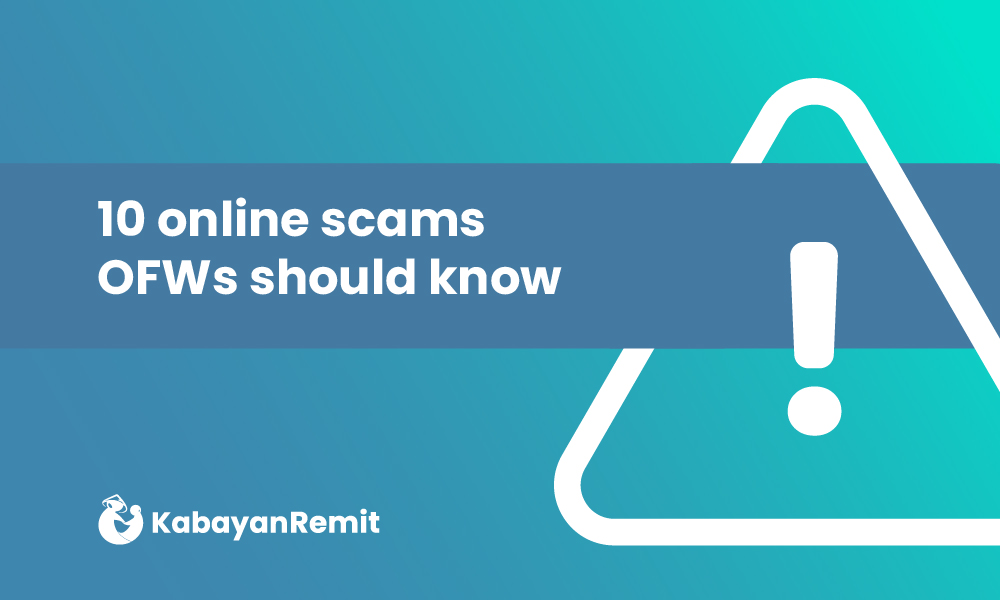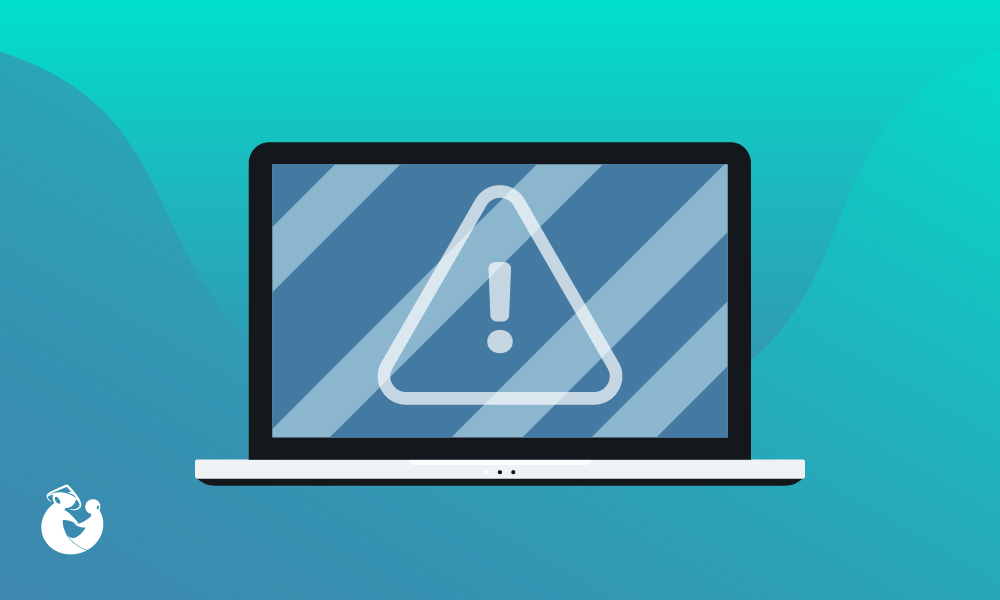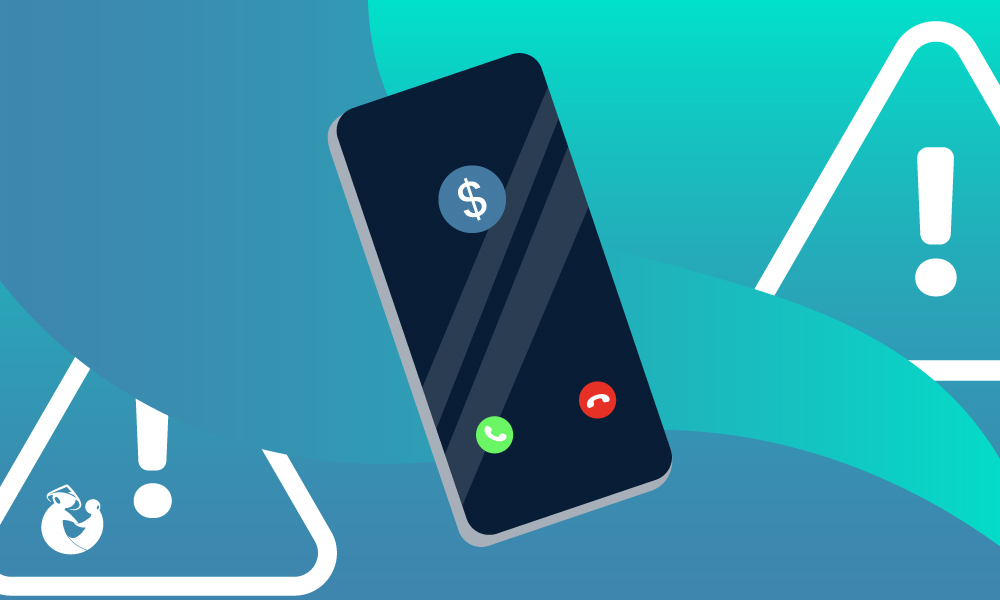
10 online scams OFWs should know
Online scams have become a serious problem for people all around the world. Overseas Filipino workers endure the challenges of being far from their families to make a living, and there are people out there waiting to trick them into giving their hard-earned money away.
In the past, scams usually happened face to face, but now these crimes have found their way into the internet.
To prevent falling into a fraudster’s trap, here are the 10 online scams OFWs should know:
- Boiler room scams
- Romance or sweetheart scams
- Lottery scams
- Phishing
- Fake check or overpayment scams
- Inheritance scams
- Emergency scams
- Imposter scams
- Ransomware
- Employment scams
Read on to be aware and be prepared.
How to spot online scams

According to the United States Federal Trade Commission, these are the tell-tale signs you’re dealing with an online scammer:
- They try to get your trust – An online scammer will try to sound like or claim to be someone you know. Other times, they will pretend to be a group or brand you trust.
- They’ll create an issue or give a prize – Usually, a scammer will contact you because of a fake emergency involving something or someone important to you. Other scammers will call to give you such good news you’ll doubt it’s even real.
- They’ll add pressure – Scammers will make you feel like there’s an emergency or that you’ll lose an opportunity. They can even threaten you.
- There’s only one way you can send them money – You’ll spot a scammer if they prefer a certain way of receiving money, like via wire transfer, cryptocurrency, remittance centres, or bank deposits.
These red flags show up in different ways depending on which of the many online scams you may encounter.
Types of online scams
Online scams take on different forms, but these are the 10 most common ones on the internet:
Boiler room scams

In a boiler room scam, you’ll get a cold call from a call centre offering lucrative investment opportunities with a well-known company. The caller won’t tell you how they’re connected with the company, but they will tell you how you’ll surely profit from making a risk-free investment with their help.
They’ll be so sure about this investment because, they claim, they have a source within the company.
Once you’re hooked, the scammer will pressure you into giving them money by continuously contacting you until you agree. According to the Philippine National Police, instigators of these online scams can even “threaten you to continue the investment since you had already expressed interest.”
If you do send money, you’ll end up overpaying for a low-value investment; or worse, there would be nothing to invest in at all. Instead, the money goes straight to the scammer’s pocket.
Aside from cold calls, boiler room scammers also contact you via email, text, or social media.
Romance or sweetheart scams

There are online scams that prey on the hearts of OFWs seeking a connection. These are romance or sweetheart scams that usually occur on online dating sites.
A scammer using this tactic creates fake online dating profiles of an overseas or out-of-town lover and tries to match with vulnerable people. They’ll woo you for months, sending gifts and expressing their love until you trust them enough to contact them outside a dating site.
Once they have you, they’ll start asking for money or trying to gain access to your bank or credit card information. They’ll say they need some money as a birthday gift. At other times, they’ll make you worry by saying they’re sick and in need of emergency healthcare funds. They’ll even try to make you feel guilty by saying they have fallen on hard times and only have you to depend on.
A romance scammer may even have an accomplice who will vouch for them when you try to check their claims. For example, the accomplice can pretend to be a doctor on the phone and confirm the scammer is sick.
The scam can go on and on until you’ve given all you can.
Lottery scams

Online scams use real lottery names to fool you into thinking you’ve won a lot of cash. The ruse involves an email declaring you a lottery winner and pressuring you to act fast because of a time limit on your cash prize.
A lottery scammer will also try to isolate you from people you trust by telling you to keep the prize secret as a supposed security measure.
If you fall for their trick, the fraudster will ask you to send them a processing fee to claim your prize. That fee would allegedly be for insurance, bank fees, or taxes.
Other lottery scammers attempt identity theft by asking for your personal information and bank details to “verify” that you’re the correct prize winner.
Phishing

Also called email spoofing or brand spoofing, phishing baits you with a direct message to catch your personal information, like passwords, social security numbers, or credit card information.
Online scams involving phishing lure you with a legitimate-looking email that convinces you to click on a link. The link leads you to a landing page where you can type in your sensitive information.
Once the scammer has your details, they can use it to steal your money or make transactions using your name.
Fake check or overpayment scams

You’re an online seller and someone sends you a check as payment for one of your items. However, when you get the check, you see it’s worth more than what your item costs.
The “buyer” asks you to send back the excess, so you use your own money to reimburse them. Later, you find out their check has bounced. You try to contact the “buyer,” but you never hear from them again.
In other versions of similar online scams, you receive a message saying you’ve won a prize but—like a lottery scam—need to pay fees to claim it.
Inheritance scams

Someone claiming to be a lawyer, banker, or some type of official contacts you online claiming you’ve inherited a fortune from a distant relative abroad. These fortunes will be in foreign currency.
Using news stories or information available online, inheritance scammers will find and drop the name of a relative or friend you know to seem legitimate. To add pressure, they may say you’re the only one left who can inherit the fortune and need to act quickly.
However, to claim your “inheritance,” you’ll need to pay the scammer or give them some personal information. Also, they may insist that the entire process of claiming the supposed inheritance must go through them.
Emergency scams

Someone that seems like a loved one contacts you online and asks for money. So you don’t check their profile, the scammer will distract you by keeping you in the conversation and saying they’re in an emergency only your help can solve.
That emergency could be an accident, legal trouble, or issues abroad. And for some reason, the fastest way to solve the problem is to send them money.
Imposter scams

In most online scams, a person pretending to be someone you trust contacts you and tries to convince you to send them money.
Other identities online scammers can claim include:
- Real estate agents or loan providers – They convince you to give them your home’s down payment or closing fees.
- Debt collectors – They pressure you into paying for debts you never had or have already settled.
- Online shops or popular brands – They trick you into buying items from their fake website.
- Charities – They fool you into donating to a bogus cause.
Ransomware

Ransomware infects your device after you click on a link or email attachment from an unknown sender. It locks your gadget and prevents you from accessing your important files until you’ve paid whoever created the malware.
You can also get ransomware from using infected flash drives.
Employment scams

Online scams involving employment lure jobhunters with flexible working conditions, high salaries, and on-the-spot hiring.
Be suspicious if the work benefits and pay seem too good, while the job description sounds like it can apply to any kind of work. Another red flag is when the “recruiter” starts asking for personal information, like bank details, even before you’ve signed an employment contract.
The most obvious sign it’s an employment scam is when you’re required to pay a “company” before you can start working for them.
Safely send money to the Philippines

You put in honest work to build your savings, so keep your money safe from online scams by following these tips:
- Avoid opening emails or clicking links from unknown sources.
- Research on whoever is reaching out to you online.
- Consult with people you trust before meeting or sending money to someone you met online.
- Ensure a website or app is legit before putting in your private information or making a purchase.
- Slow down and think before rushing to pay.
And when you’re ready to send money, always use a secure money transfer platform like Kabayan Remit, so you know your funds reach the right people.
